|
|
|
Sort Order |
|
|
|
Items / Page
|
|
|
|
|
|
|
| Srl | Item |
| 1 |
ID:
133050
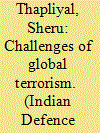

|
|
|
|
|
| Publication |
2014.
|
| Summary/Abstract |
There should be no distinction between a good and a bad terrorist which is what some countries are trying to do. The scourge will consume all unless it is ruthlessly eliminated. Countries sponsoring terrorism might realise that it is like riding a tiger that, one day, they might tall prey to. The biggest worry at these countries which have sulterecl at the hands at terrorists is that Weapons of Mass Destruction may fall into the hands at the terrorists and that catastrophic consequences would tollowi A worldwide integrated approach to tackling terrorism is, therefore, a must.
|
|
|
|
|
|
|
|
|
|
|
|
|
|
|
|
| 2 |
ID:
132229
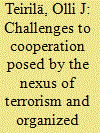

|
|
|
|
|
| Publication |
2014.
|
| Summary/Abstract |
The recent conflict in the Sahel area is another case where the nexus of terrorism and organized crime causes challenges to the international community. Comparing the situation with that of the Andean region brings forth the challenges faced when dealing with this type of conflict: the states' weak presence in the remote regions, the insurgents' ability to offer income and "security" to the people, immediate threat to international investments, unresolved political/regional issues, the marriage of convenience of insurgents/terrorists and organized crime, internal divisions of the insurgent groups and also ideologies surviving or suffering after the elimination of their leaders
|
|
|
|
|
|
|
|
|
|
|
|
|
|
|
|
| 3 |
ID:
132495
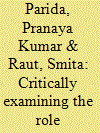

|
|
|
|
|
| Publication |
2014.
|
| Summary/Abstract |
Each day, natural disasters such as ?oods, earthquakes and hurricanes/ cyclones threaten human life and cause severe environmental losses around the world. During the last decade, disasters have affected the lives and assets of almost 2.4 billion people across the world (OCHO, 2010). In India alone since the year 2000, an average 65 million people have been affected by disasters every year. Of this, 8.45 million have been children under the age of ?ve and 3.25 million are pregnant and lactating mothers (UNICEF). Such
humanitarian crises often set back the developmental gains of lesser developed regions by several" decades. Not only do disasters lead to the loss of life and property, but "the immediate a?ermath is a complex situation complicated by issues of logistics, search and rescue, relief distribution, limited accessibility to some of the affected areas, the threat of secondary disasters, the mostly well-intentioned interests of diverse stakeholder groups (which many a times are external to the context of thedisaster), the in?ow of aid material and grants, political interest, media interest and often limited administration capacity. Government is responsible for administrative arrangements dealing with disasters.- Effective policies play a vital role in mitigating the impact of disasters and reducing likely losses of life and property ( Erramilli, 2008) . The disaster management, which is not being treated as a sector by itself, is
undergoing major changes, especially at the institutional and policy levels, which are prompted by various. macro-level factors ( Wagle and Warghade, 2006). Effective coordination among various stakeholders, specifically the Government, the international community and nongovernmental organizations (NGOS) in the aftermath of a disaster is critical to, among other things, a minimization in disaster response time, the proper allocation of resources and the avoidance of duplication of response efforts; Moreover, as economic growth and sustainable development are essential to successful disaster preparedness and mitigation efforts, effective coordination has the potential to strengthen the link between emergency response, preparedness and long-term development strategies.
|
|
|
|
|
|
|
|
|
|
|
|
|
|
|
|
| 4 |
ID:
132497
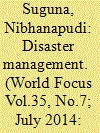

|
|
|
|
|
| Publication |
2014.
|
| Summary/Abstract |
Hundreds of Natural disasters take place worldwide every year causing irreparable damage to life and property. Earthquakes, ?oods, typhoons, hurricanes,- Tsunamis are among the worst of these natural disasters. Over the last few decades, there has been an alarming increase in the occurrence of natural disasters and the magnitude of their social, economic and environmental impact. During any natural disaster it is usually the" children who suffer the most. The nation witnessed the death of nearly a thousand children during the 2001 Bhuj earthquake. Out of them, 300 died while marching for the Republic day parade. They were in a narrow lane when the earthquake hit causing buildings onboth sides to collapse. It is said thatpnearly 1,884 school buildings collapsed leading to a loss of 5,950 class rooms. About 12000 schools suffered damages making them un?t for children to continue their studies. Fire tragedies, like the one in Kurnbakonam killed 93 children in a school. Another ?re accident in Dabwali, Haryana where a ?re broke out during a schoolfunction took he lives of many school children. Children in schools are the 'most vulnerable group during any disaster. These tragedies reiterate the need for all of us to sit up and think about the safety of these children. It is necessary to make schools safe and hazard proof. For this purpose, it is important to have disaster management, emergency preparedness and response plans at school level.
|
|
|
|
|
|
|
|
|
|
|
|
|
|
|
|
| 5 |
ID:
132498
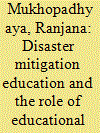

|
|
|
|
|
| Publication |
2014.
|
| Summary/Abstract |
Disasters are increasing exponentially. The number of disaster events which was 73 in 1900-09 has increased to 4494 during 2000-09. More people were affected in the two recent decades than the earlier ones. During the second half of the 20th century, more than 200 major natural disasters occurred in different parts of the world and claimed the lives of around 1.4 million people. In 2011 alone, 302 hazards resulted in disasters that claimed almost 30,000 lives, affected 206 million people and in?icted damages worth an estimated USS 366 billion, according to the United Nations Office for Disaster Risk Reduction.
|
|
|
|
|
|
|
|
|
|
|
|
|
|
|
|
| 6 |
ID:
128092


|
|
|
|
|
| Publication |
2012.
|
| Summary/Abstract |
A cyber-security becomes an often misunderstood topic within national security doctrines, Colin Williams, Watson Tim and Ian Bryant argue that a change of mindset in the post cold war ear is fundamental to understanding the fifth domain
|
|
|
|
|
|
|
|
|
|
|
|
|
|
|
|
| 7 |
ID:
132226


|
|
|
|
|
| Publication |
2014.
|
| Summary/Abstract |
Despite increasing concern over the potential threat from "forest jihad," there has been no systematic attempt to assess whether such attacks are in fact taking place. Drawing on principles from the geospatial profiling of terrorist events, fire-risk prediction data, and information on jihadist convictions, this article offers a thorough review of the evidence to address this question. The available information suggests that so far, jihadists have not attempted to attack North American or European wildlands by means of arson. Despite calls for "popular resistance terrorism" in the jihadist literature, and the apparently low costs associated with this type of attack, jihadists have so far shown little appetite for "forest jihad."
|
|
|
|
|
|
|
|
|
|
|
|
|
|
|
|
| 8 |
ID:
134039
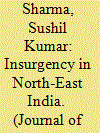

|
|
|
|
|
| Publication |
2014.
|
| Summary/Abstract |
State and non-state elements in India's neighbourhood have beensupporting insurgency in the North-East to weaken the Indian state. Inthe 1960s and 1970s, insurgents from the region, particularly the Nagarebels, had received moral and material support from China. Moreover,elements in Pakistan and Bangladesh too have been aiding North-EastIndian insurgents from time to time. The sanctuaries in Bhutan andMyanmar have emerged out of the inability of their governments toadequately administer the border areas or deal effectively with the hostileactivities of the Indian insurgents inside their respective territories. Thisarticle examines the role played by various external powers in sustain inginsurgency in the North-East, the changing external dynamics, andprovides a road map for future.
|
|
|
|
|
|
|
|
|
|
|
|
|
|
|
|
| 9 |
ID:
086350
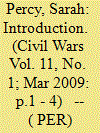

|
|
|
|
|
| Summary/Abstract |
Civil wars are,by their very nature, often characterised by the participation of non-state actors.Because civil wars often occur in situations where the state's authority is weak or non-existent, external actors of all types can play both indirect and direct roles.This special issue seeks to examine these two types of actors combined: What happens when non-state actors external to conflicts paricipate in civil wars?Have new actors of this type appeared on the internationl stage?
|
|
|
|
|
|
|
|
|
|
|
|
|
|
|
|
| 10 |
ID:
132214


|
|
|
|
|
| Publication |
2014.
|
| Summary/Abstract |
Militant organizations pursue two common aims: to survive and to achieve the goals that define their raison d'être. Yet, elements that sustain the life spans of militant organizations are not necessarily the same components that advance the accomplishment of their core, or "outcome," goals. Further, some organizational practices, such as the use of suicide attacks, generate a tradeoff that bolsters survivability while detracting from the effective pursuit of outcome goals. This study demonstrates that three operating conditions explain variation in the duration and achievement of contemporary militant organizations: receptiveness to tradeoffs, levels of external support, and the nature of adversaries. As such, the unique effects of different operating conditions reveal why many militant organizations survive for long periods of time but only a few achieve the goals that justify their existence.
|
|
|
|
|
|
|
|
|
|
|
|
|
|
|
|
| 11 |
ID:
097645
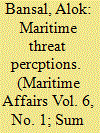

|
|
|
| 12 |
ID:
096918
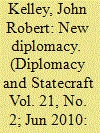

|
|
|
|
|
| Publication |
2010.
|
| Summary/Abstract |
The continued rise of the non-state actor in twenty-first century international politics issues a potent challenge to state primacy in the area of diplomacy. Diplomacy's statist tradition, once the bedrock organising institution for pursuing international politics, is ceding influence to non-state actors-the "new" diplomats-who have displayed impressive skill at shaping policy through means that foreign ministries fail to grasp. To the chagrin of established scholars and practitioners, this paper claims that nothing has transpired to suggest the diplomatic profession is doing anything but pluralising. Furthermore, the process by which the foreign ministry opens itself to the public increasingly resides with the latter. Does this revolution mean the evolution of the "new diplomacy" has materialised? The contents in the following pages suggest so, and the main reason for this is built upon a radical view of agency: the age of diplomacy as an institution is giving way to an age of diplomacy as a behaviour. Yet despite who dominates in the art of influence, caveats remain and it appears likely that each side will need the other to achieve successful statecraft in the years to come.
|
|
|
|
|
|
|
|
|
|
|
|
|
|
|
|
| 13 |
ID:
107786
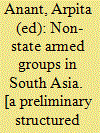

|
|
|
|
|
| Publication |
New Delhi, IDSA, 2012.
|
| Description |
xxi, 397p.
|
| Standard Number |
9788182745759, hbk
|
|
|
|
|
|
|
|
|
|
|
|
Copies: C:2/I:0,R:0,Q:0
Circulation
| Accession# | Call# | Current Location | Status | Policy | Location |
| 056286 | 303.62095/ANA 056286 | Main | On Shelf | General | |
| 056287 | 303.62095/ANA 056287 | Main | On Shelf | General | |
|
|
|
|
| 14 |
ID:
131781
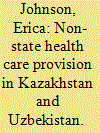

|
|
|
|
|
| Publication |
2014.
|
| Summary/Abstract |
Drawing on comparisons with cooperative and competitive non-state health care provision around the world, this article analyses non-state provision of health services in post-Soviet Uzbekistan and Kazakhstan. It explores the conditions in which non-state provisions remain cooperative or become politicised and contrasts the relations between NGOs and the state in Uzbekistan and Kazakhstan and the way they became politicised in the Middle East. In contrast to Western conceptions of NGOs, Central Asia's health NGOs cooperate with state agencies to serve their constituencies. In contrast to the perceptions of Central Asian governments, health-oriented NGOs do not aim to politicise health care. Donor support to Central Asia's health NGOs has created civically oriented actors that fill gaps in the state's capacity and enable governments to better serve their populations.
|
|
|
|
|
|
|
|
|
|
|
|
|
|
|
|
| 15 |
ID:
096106
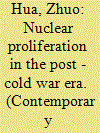

|
|
|
| 16 |
ID:
185264
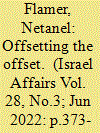

|
|
|
|
|
| Summary/Abstract |
As the inherently weaker party in an asymmetric conflict with a state, most non-state actors tend to revert to an offsetting strategy to neutralise the adversary’s advantages and exploit its vulnerabilities. To counter this strategy stronger parties might adopt a strategy defined in the article as an ‘Offsetting the Offset Strategy’ (OTOS). By exploring Israel’s OTOS vis-à-vis Hamas during the May 2021 Gaza war, this article illustrates and analyses the nature and characteristics of this strategy. It shows that while OTOS has some significant advantages, it also entails several drawbacks that policymakers must take into account.
|
|
|
|
|
|
|
|
|
|
|
|
|
|
|
|
| 17 |
ID:
133141
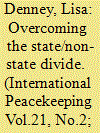

|
|
|
|
|
| Publication |
2014.
|
| Summary/Abstract |
Despite the widely accepted recognition that fragile and conflict-affected countries are characterized by plural security and justice orders, donor-led security and justice programmes continue to engage overwhelmingly with state actors on the basis of liberal peacebuilding models that internalize Weberian understandings of the state. In addition, policies pushing reformers towards engagement with 'informal', 'non-state', or customary systems often do so in a way that suggests a neat separation between the 'state' and 'non-state'. This does not reflect how security and justice operate in practice. This paper uses the case of Sierra Leone to demonstrate the panoply of actors that constitute the plural security and justice context there, and how these actors interact in practice. This reveals the highly interactive nature of the multiple security and justice chains commonly used in Sierra Leone. It is argued that in order to meaningfully engage with the multitudinous ways in which people access security and justice, external reformers need to develop a comprehensive understanding of this complexity. Such an understanding will assist reformers in transcending the increasingly unhelpful state/non-state distinction and in engaging with security and justice from the perspective of the end users, rather than from the perspective of externally derived models.
|
|
|
|
|
|
|
|
|
|
|
|
|
|
|
|
| 18 |
ID:
132488
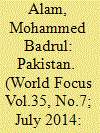

|
|
|
|
|
| Publication |
2014.
|
| Summary/Abstract |
Like in any nuclear weapon state, multiple vulnerabilities exist in a nuclear weapons complex. In the case of Pakistan, it is possible that groups or individuals may violate security rules for a variety of reasons, including pro?t making, settling a vendetta, or religious or ideological motives. Rogue elements may try to gain control over sensitive items for their own use or to transfer these items to another state or to other non-state actors for ?nancial or ideological reasons. A special concern is that of Pakistan, as its history_ suggests, may suffer another military coup at some point of time. A new leadership, in that case, can be expected to- place a high priority on seizing the country's nuclear assets
|
|
|
|
|
|
|
|
|
|
|
|
|
|
|
|
| 19 |
ID:
132230
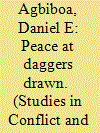

|
|
|
|
|
| Publication |
2014.
|
| Summary/Abstract |
More than 3,500 people have died in Nigeria since 2009 when Boko Haram, a radical Islamist group from northeastern Nigeria, launched its violent campaign to wrest power from the Nigerian government and foist an Islamic state under the supreme law of Sharia. Attempts at negotiating with the group, including the recent amnesty offer extended to its members by the Nigerian government, have stalled due to distrust on both sides and the factionalized leadership of the group's different cells. This article provides a systematic account of Boko Haram's emergence, demands, and modus operandi. It also evaluates how the Nigerian government has responded to the group's threat and how they should respond. The socioeconomic approach of this article helps to explain the Boko Haram problem beyond a usual religious agenda and to evaluate the development of the group in the context of Nigeria's checkered political history and local economic grievances.
|
|
|
|
|
|
|
|
|
|
|
|
|
|
|
|
| 20 |
ID:
132213
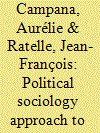

|
|
|
|
|
| Publication |
2014.
|
| Summary/Abstract |
This article seeks to foster a better understanding of the diffusion of conflict in the North Caucasus. We argue that diffusion of conflict is a dynamic and adaptive process in which outcomes are shaped by the intersection of three social mechanisms-attribution of similarity, brokerage, and outbidding-and the political, social, and religious contexts. We suggest that a distinction should be made between horizontal and vertical processes of diffusion. We also approach the empirical diffusion of conflict from a different perspective, showing that non-Chechen actors have played a key role in both the diffusion process and its outcomes.
|
|
|
|
|
|
|
|
|
|
|
|
|
|
|
|
|
|
|
|
|